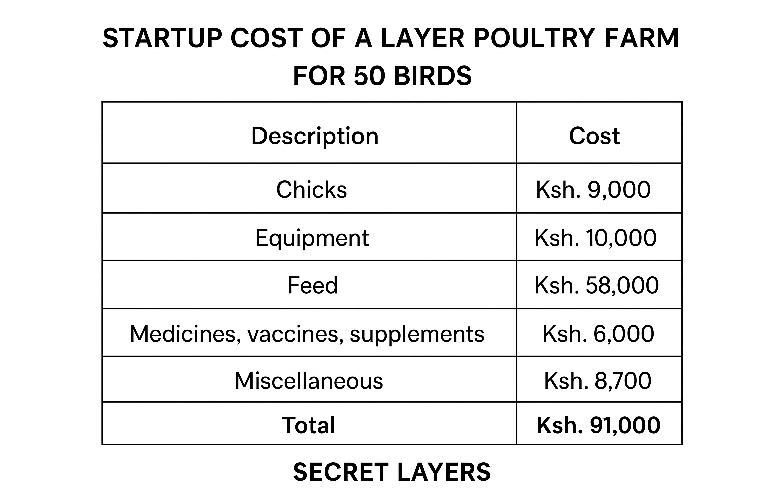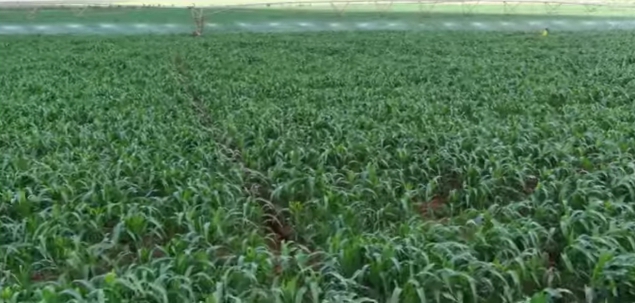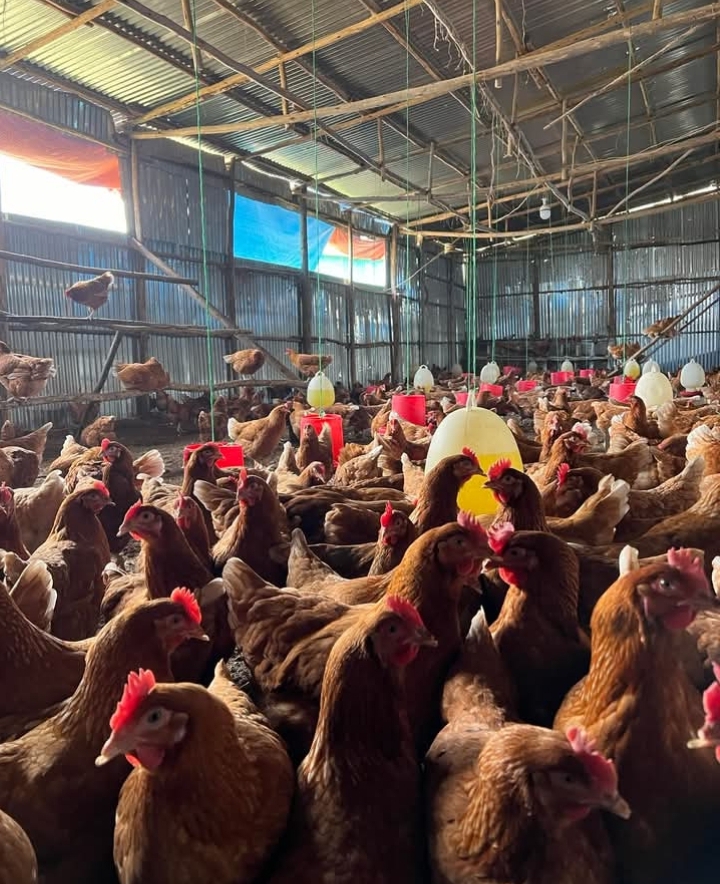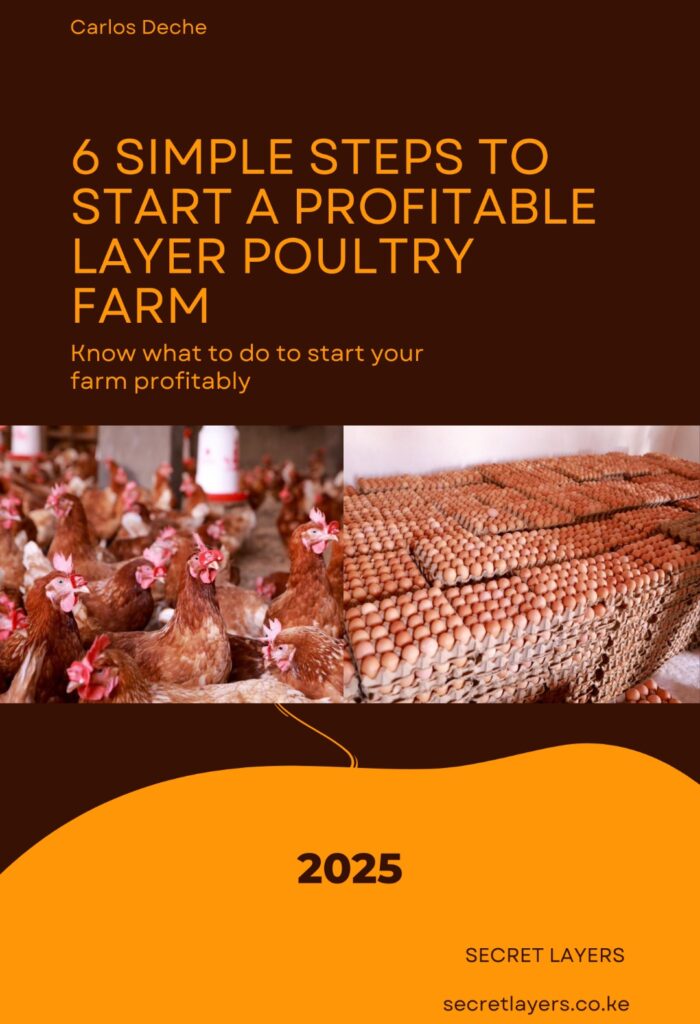You’ve decided it’s layers you want to keep on your farm, and you’re asking yourself: how much will it cost to start?
Or maybe you haven’t decided yet. Check the reason why I chose layers here — it will help you decide👇🏿
6 Reasons Why I Chose Broilers And Why You Should Too
You want to know how much you’ll need to start your farm.
You want to plan, budget, or save for it.
And you don’t want to be caught off guard by unforeseen costs or run out of money halfway through your project.
You’re also tired of seeing so many different startup costs on the internet.
Well, this is the realest startup cost estimate you’ll ever see.
This guide is for you.
Before We Start – 3 Things To Keep In Mind
1. No figure you see on the internet is exactly what you’ll need.
Don’t be happy if you find it’s little, and don’t be sad if it seems too much.
2. There are many assumptions to be made and considered.
3. It all depends on what you want and how you want it.
When you’re calculating the cost of starting a layer poultry farm, always remember these points. Every farm is unique.
Key Assumptions Used In This Guide
✅I used a standard price of Ksh. 4,000 for a 50 kg bag of feeds (starter, grower, and layers mash).
Feed prices vary by type and location in Kenya.
✅A price of Ksh. 150 per layer chick has been used (2025 prices).
✅Under feeds, you’ll need to prepare for starter, grower, and one month of layer mash in your startup costs.
That covers about six months before you sell your first egg.
✅No construction cost is included in these startup costs.
This is because building materials and labor prices vary widely from place to place.
✅Labour costs are also excluded since they differ depending on whether you hire help or work on your own.
Remember, even if you do all the work yourself, don’t forget to pay yourself a salary.
I calculated the startup costs for 50 birds based on poll results from the Secret Layers ;
Detailed Breakdown Of Startup Costs For 50 Layers
1. Chicks
60 × Ksh. 150 = Ksh. 9,000
I used 60 chicks to cover possible mortality — some chicks will die.
Tip: Don’t forget transport costs from the distributor or hatchery to your farm. Many farmers do.
I’ve included that under miscellaneous below.
2. Equipment
Estimated at Ksh. 10,000.
I used the equipment list from this 28 equipments post and realistic prices for what’s really needed when starting small.
3. Feed Costs
When planning the budget for layer farming, feed is your biggest expense.
Below is the estimate based on average poultry feed prices in Kenya in 2025.
Starter Mash
2.5 kg per bird in the first 8 weeks
50 birds × 2.5 kg = 125 kg
Since one 50 kg bag costs Ksh. 4,000:
125 kg × 4,000 ÷ 50 = Ksh. 10,000
Grower Mash
9 kg per bird for 11 weeks
50 birds × 9 kg = 450 kg
450 kg × 4,000 ÷ 50 = Ksh. 36,000
Layer Mash
3 kg per bird for 1 month before you start selling eggs
50 birds × 3 kg = 150 kg
150 kg × 4,000 ÷ 50 = Ksh. 12,000
Total feed cost:
10,000 + 36,000 + 12,000 = Ksh. 58,000
4. Medicines, Vaccines, and Supplements
Estimated at Ksh. 6,000 from start to selling of the batch.
5. Miscellaneous
Estimated at Ksh. 8,700 (about 15% of feed costs)
This covers day-to-day expenses, transport, and unexpected costs.
Always include a buffer in your layer chicken startup costs.
Total Startup Cost
9,000 + 10,000 + 58,000 + 6,000 + 8,700 = Ksh. 91,000
This is the estimated cost of starting a layer poultry farm with 50 birds in Kenya in 2025.

Remember
✅ Construction costs (including cages or litter) are not included.
✅ I used 60 chicks to cover mortality.
✅ Transport costs are added under miscellaneous — most farmers forget this.
✅ Feed amounts include spillage and spoilage, which many startup guides ignore.
✅ Feed prices are standardized at Ksh. 4,000 per 50 kg bag, an average figure for 2025.
✅ A miscellaneous cost (15%) has been added for safety — almost everyone forgets this part.
Practical Tips To Lower Your Startup Costs
✅ Buy feeds in bulk (especially starter and grower mash).
✅ Improvise equipment instead of buying everything new.
✅ For housing, repurpose an existing structure or use cheap local materials.
✅ Negotiate prices and avoid building a fancy chicken house just for show.
Keeping your setup simple will significantly lower the cost of starting your farm.
This guide has given you a realistic picture of the cost of starting a layer poultry farm in Kenya.
With around Ksh. 91,000, you can start small with 50 layers, cover all basic costs, and begin your poultry business confidently.
Would you start with 50 birds or more?
Share your thoughts in the comments or tell me how you’re planning your layer poultry farming journey.
Get this Free Layer Poultry Guide and get our regular Layer Chicken Digest Tips straight to your email.

See you next Friday!
carlosdeche4040@gmail.com
secretlayerske@gmail.com









